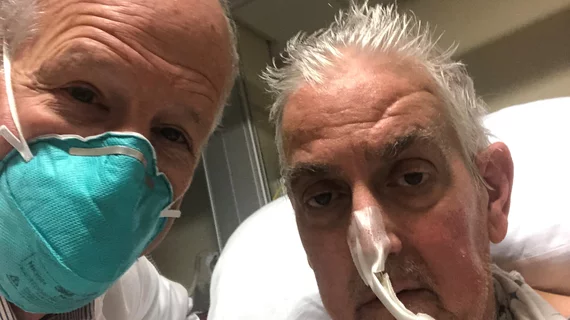How did the pig heart transplant patient die? A preventable infection may be to blame
History was made in January when, at the University of Maryland Medical Center (UMMC) in Baltimore, a genetically modified pig heart was transplanted into a human patient for the very first time. The patient, 57-year-old David Bennett, presented with terminal heart failure, and his requests for a conventional heart transplant had been denied by multiple facilities, including UMMC. The FDA approved this historic procedure through an emergency authorization.
Bennett seemed to be progressing well after the transplant, according to an early update from his care team, but then he died in March. At that point, no specifics were shared with the public related to the possible cause of death.
Now, according to the original surgeon who transplanted the pig heart into Bennett, it has been learned that the pig heart was infected with the virus porcine cytomegalovirus. It is not 100% clear if the virus is the only reason Bennett died, but it seems to have played a significant role.
Bartley P. Griffith, MD, shared the news during a webinar hosted by the American Society of Transplantation. It was first reported by the team at MIT Technology Review.
Griffith explained during the webinar that impact of the virus came in waves — first it was one failed test, then Bennett seemed to improve, then the complications came back — before finally resulting in too much inflammation for the heart to handle.
“I personally suspect he developed a capillary leak in response to his inflammatory explosion, and that filled his heart with edema, the edema turned into fibrotic tissue, and he went into severe and unreversing diastolic heart failure,” Griffith said, as quoted in MIT Technology Review’s coverage.
According to Griffith, these types of infections should be preventable going forward. He and his colleagues are still reviewing the data closely.
“We are devastated by the loss of Mr. Bennett,” Griffith said in a prepared statement from UMMC in March. “He proved to be a brave and noble patient who fought all the way to the end. We extend our sincerest condolences to his family.”
“We have gained invaluable insights learning that the genetically modified pig heart can function well within the human body while the immune system is adequately suppressed,” added Muhammad M. Mohiuddin, MD, scientific director of the Cardiac Xenotransplantation Program at University of Maryland School of Medicine. “We remain optimistic and plan on continuing our work in future clinical trials.”
University of Maryland Cardiac Xenotransplantation Program has been working on ways to transplant pig hearts into humans for several years. Porcine hearts are very similar in size, anatomy and function to human hearts. If a transplant method can be perfected, this would likely solve the large shortage of human donor hearts. It could also potentially eliminate the need for transplant waiting lists or the use of long-term or destination therapy with left ventricular assist devices (LVADs)
Related Cardiac Surgery Content:
Pig heart transplant patient dies 2 months after historic procedure
Pig heart transplant patient doing well weeks after procedure—he even watched the Super Bowl
Young patient recovering after world’s first combination heart transplant and thymus procedure
Bariatric surgery associated with lower risk of death and cardiovascular disease

